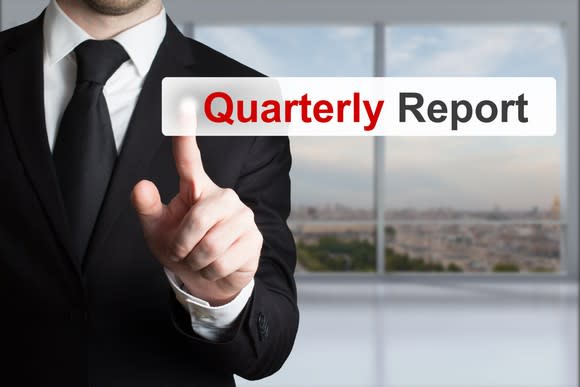The Clear Reason Owens & Minor, Inc. Tumbled as Much as 19%
What happened
Shares of Owens & Minor (NYSE: OMI), a global healthcare services company that focuses on supply chain management, plunged as much as 19% on Wednesday after the company released its third-quarter earnings results. As you can probably surmise by the substantive move lower, the company fell short of Wall Street's expectations.
So what
For the quarter, Owens & Minor reported $2.33 billion in consolidated sales, which was a decline of $90 million from the year-ago quarter and $70 million below what Wall Street had forecast. On a broad scale, the company blamed the previously disclosed transition of a significant customer last year, along with slower growth from existing customers, for its weak revenue figure.

Image source: Getty Images.
In terms of profitability, the company reported adjusted net income of $24.3 million, or $0.40 per share, which compares unfavorably to the $0.54 in adjusted EPS in the year-ago period. Wall Street was looking for Owens & Minor to generate $0.50 of EPS in the quarter. Weaker margins and profitability were attributed to pressure in its domestic distribution business, both before and after hurricanes Harvey and Irma, along with higher expenses tied to its burgeoning European business. The company's press release notes that productivity initiatives, international cost controls, and recent acquisitions helped offset some of this weakness.
As a result of its poor quarter, Owens & Minor updated its full-year profit guidance to between $1.75 and $1.85 in adjusted EPS, which is down from its previous forecast of $1.90 to $2.
Additionally, the company announced the largest acquisition in its history: the $710 million all-cash purchase of surgical and infection-prevention products company Halyard Health. The deal, which is expected to close in the first quarter of fiscal 2018, is forecast to add about $1 billion in annual revenue and boost EBITDA (earnings before interest, taxes, depreciation, and amortization) by $80 million annually. Pre-tax synergies are expected to reach $40 million annually at their peak.
Now what
There's a lot for investors to digest here. The move to expand into new markets is intriguing, as the new business could complement nicely the niche Owens & Minor serves in the inelastic healthcare sector. But a lot of questions remained unanswered.

Image source: Getty Images.
To begin with, even with a major customer transitioning away from Owens & Minor, it noted weakness across its domestic business. The company admits to taking cost-control measures in Europe that should help in future quarters, but gave little insight into how it'll handle margin pressure in its bread-and-butter domestic segment.
Also, while the Halyard acquisition should be accretive to EBITDA and possibly margins, there's no guarantee that Owens & Minor will be able to incorporate the business into the fold quickly and efficiently to realize these cost synergies.
If there is a saving grace here, it's that Owens & Minor is relatively inexpensive at less than 10 times forward earnings. This should help provide a floor for value-seeking investors if they want to dip their toes into the water. But beyond acquisitions, Wall Street is waiting for a return to steady organic growth before it once again gives a green light to Owens & Minor, and I'd suggest you do the same.
More From The Motley Fool
Why You're Smart to Buy Shopify Inc. (US) -- Despite Citron's Report
6 Years Later, 6 Charts That Show How Far Apple, Inc. Has Come Since Steve Jobs' Passing
Sean Williams has no position in any of the stocks mentioned. The Motley Fool has no position in any of the stocks mentioned. The Motley Fool has a disclosure policy.
